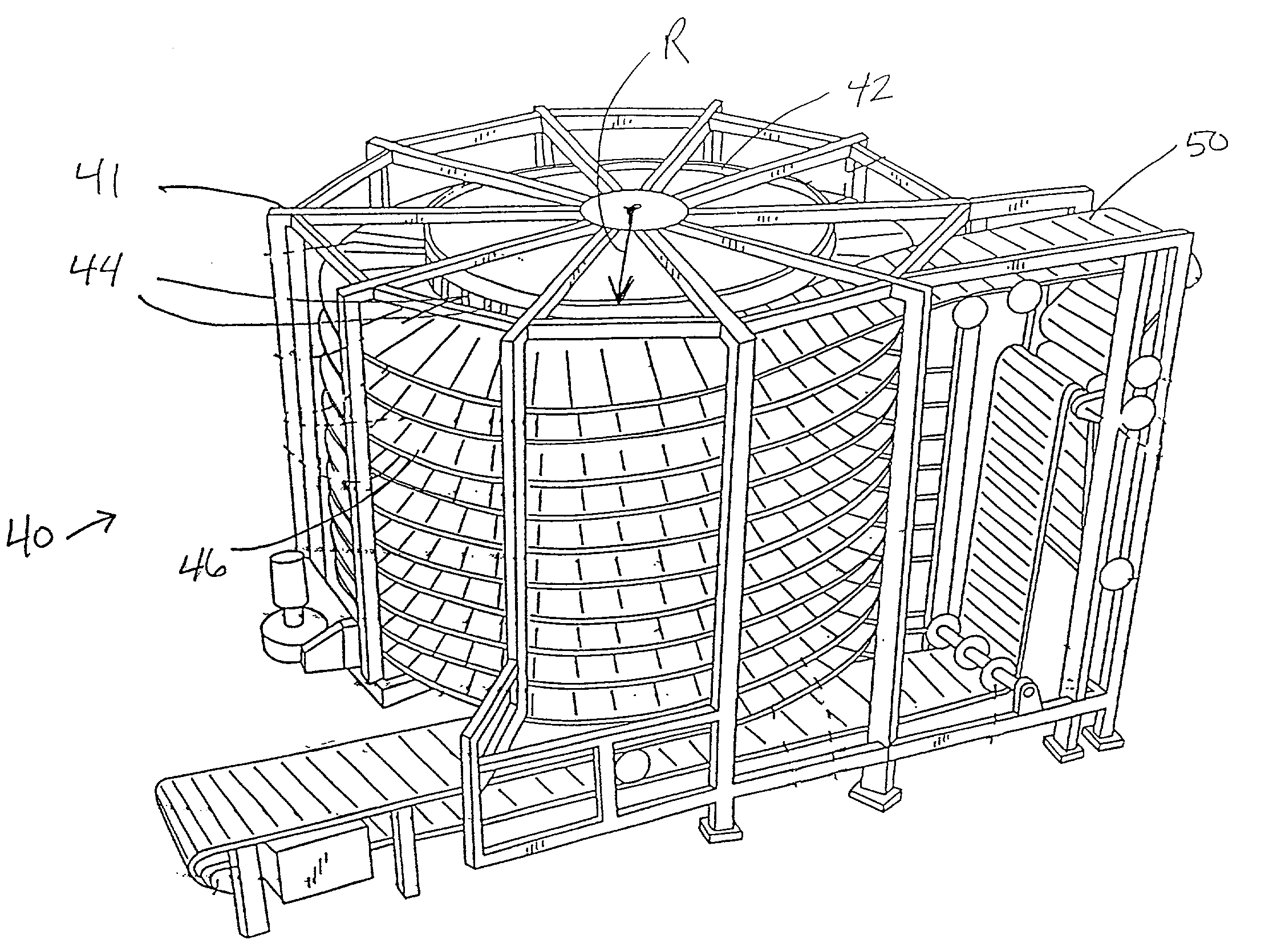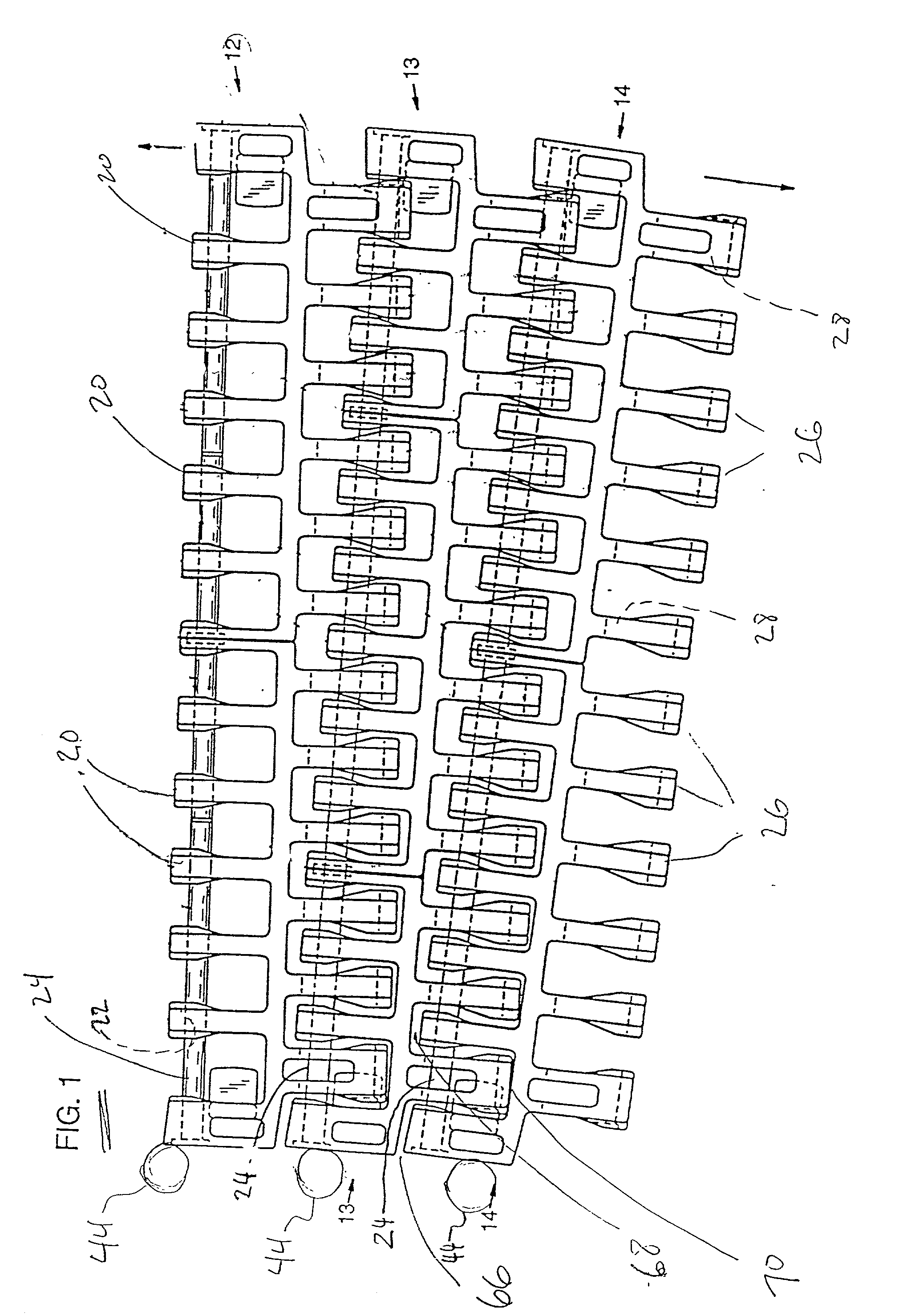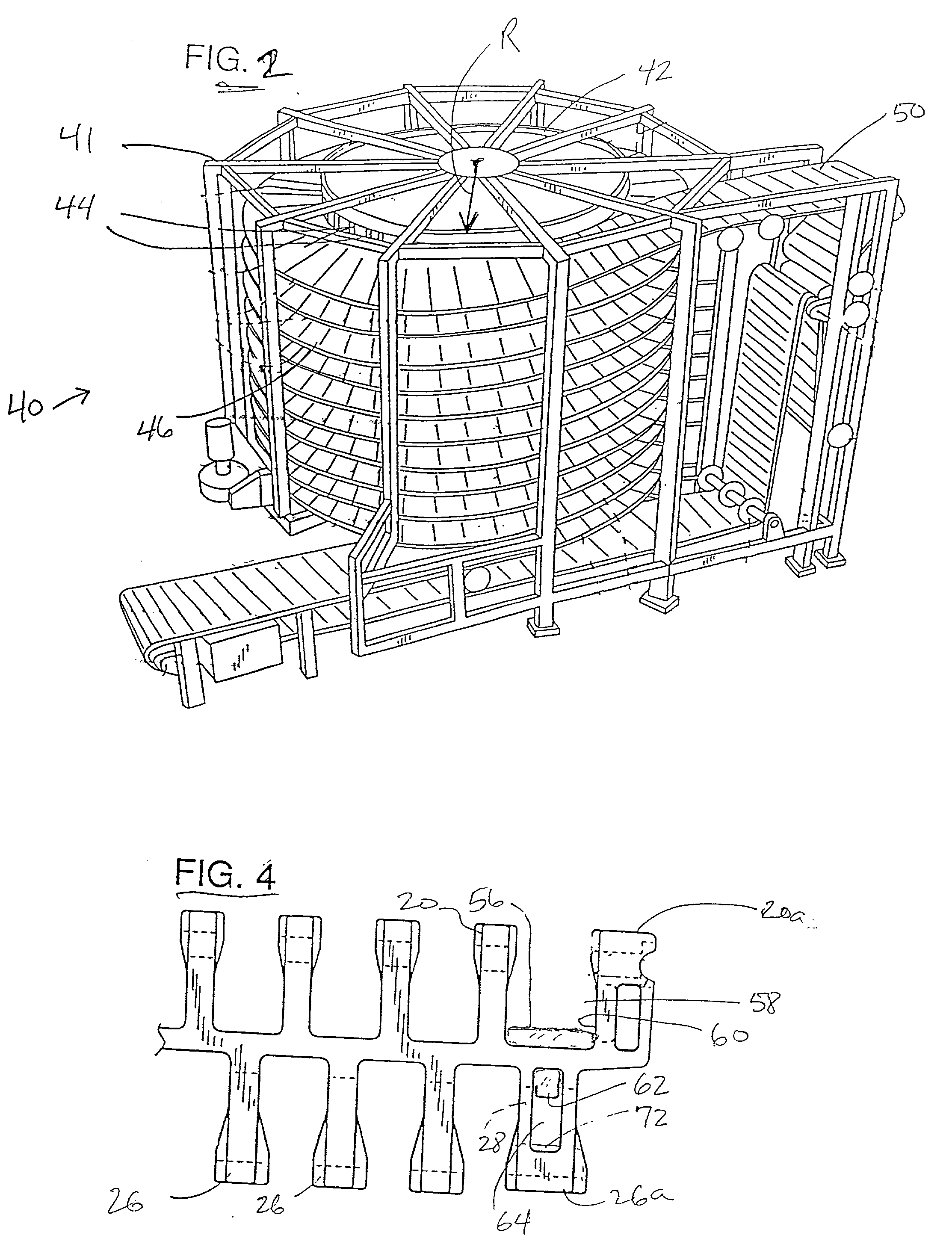Method for radius limit adjustment on radius conveyor belts
a technology of radius limit and conveyor belt, which is applied in the field of plastic modular conveyor belts, can solve the problems of limited collapse degree, and achieve the effect of preventing or minimizing the chatter or stick and slip action
- Summary
- Abstract
- Description
- Claims
- Application Information
AI Technical Summary
Benefits of technology
Problems solved by technology
Method used
Image
Examples
Embodiment Construction
[0019] In the drawings, FIG. 1 shows a portion of a plastic modular belt 10 capable of travel around curves, and this belt can be considered a basic radius modular conveyor for purposes of the invention. This belt is essentially as described in U.S. Pat. Nos. 5,181,601 or 4,901,844. As is well-known, the belt has rows of modules 12, 13, 14, etc., each of which has at least one module and usually more than one module side by side to make up the row. Facing in one direction from each module are a plurality of first projections or projecting link ends 20 which have apertures 22 to receive a connecting rod 24. The other set of link ends, which can be called a second set of projecting link ends 26, have slotted apertures 28 so that the inner edge of the assembled conveyor belt can collapse the modules together as the belt travels around the curve, the collapsed edge being the inside edge.
[0020] As explained above, these belts are often guided around the inside of the curve in the conveyo...
PUM
| Property | Measurement | Unit |
|---|---|---|
| radius of curvature | aaaaa | aaaaa |
| length | aaaaa | aaaaa |
| width | aaaaa | aaaaa |
Abstract
Description
Claims
Application Information
 Login to View More
Login to View More - R&D
- Intellectual Property
- Life Sciences
- Materials
- Tech Scout
- Unparalleled Data Quality
- Higher Quality Content
- 60% Fewer Hallucinations
Browse by: Latest US Patents, China's latest patents, Technical Efficacy Thesaurus, Application Domain, Technology Topic, Popular Technical Reports.
© 2025 PatSnap. All rights reserved.Legal|Privacy policy|Modern Slavery Act Transparency Statement|Sitemap|About US| Contact US: help@patsnap.com



